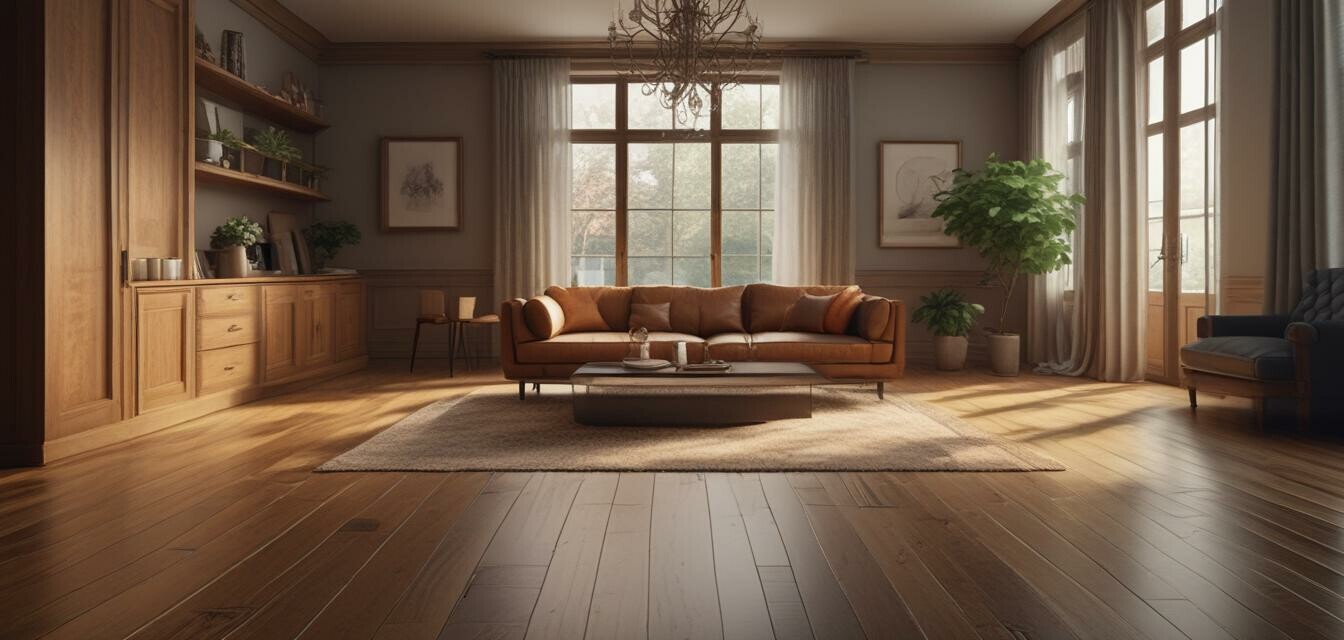
How to Select the Best Wooden Flooring for Your Home
- Consider your lifestyle and the specific needs of your home.
- Understand the different types of wood and their characteristics.
- Assess the finishes available and how they influence maintenance.
- Budget appropriately, including installation and long-term care costs.
- Explore various design options that complement your interior style.
When it comes to enhancing the heart of your home, selecting the right wooden flooring is crucial. With many styles and types available, it's essential to consider your lifestyle, design preferences, and practical needs. This guide will walk you through the necessary steps to ensure you pick the best wooden flooring for your home.
Understanding Different Types of Wood
Wooden flooring can be primarily categorized into three main types: solid wood, engineered wood, and laminate. Each type offers unique characteristics that can impact both aesthetics and functionality.
| Type of Wood | Description | Advantages | Disadvantages |
|---|---|---|---|
| Solid Wood | Made from a single piece of timber. | Durability, refinishing options, high resale value. | Susceptible to moisture and temperature changes. |
| Engineered Wood | Composed of multiple layers of wood. | Stable under varying conditions, eco-friendly options, easier installation. | May have limited refinishing options. |
| Laminate | A synthetic product that copies the look of wood. | Cost-effective, scratch-resistant, easy to install. | Less authentic feel, cannot be refinished. |
Evaluating Your Lifestyle Needs
When selecting flooring, consider how you use your space. Here are some questions to guide your decision:
- Do you have pets or small children that may scratch or damage the floors?
- Is your home subject to high humidity or changes in temperature?
- How often do you choose to renovate or redesign your space?
Durability and Maintenance
Depending on your answers to the above questions, you may prioritize different aspects of wood flooring:
- For high traffic areas, consider more durable materials like engineered wood or laminate that can withstand wear and tear.
- If you're willing to commit time to maintenance, solid wood can offer longevity and the option for refinishing.
Choosing the Right Finish
The finish on your wooden flooring significantly impacts its maintenance and appearance. Here are the most common types:
| Finish Type | Description | Maintenance Level |
|---|---|---|
| Oil Finish | A natural finish that penetrates the wood. | Regular oiling required. |
| Synthetic Finish | A durable surface layer that protects the wood. | Low maintenance, simply clean with wood-safe products. |
| Polyurethane | Creates a tough, waterproof barrier. | Needs to be applied periodically. |
Budget Considerations
Establishing a budget is essential. Keep in mind the following costs:
- Cost of the flooring material itself
- Installation costs
- Maintenance and repair costs over time
Ensure that you are making informed decisions by incorporating these costs into your overall budget. It’s more than just the purchase price — long-term care is crucial.
Design Options
Wood flooring shouldn’t just be functional; it should reflect your personal style. Consider these design aspects:
- Color: Light versus dark woods can dramatically change the mood of a room.
- Grain Patterns: Unique variations can add character to your floors.
- Board Width: Wider planks can create a more modern look.
For more information about wood finishes, check our wood finishing products page.
Conclusion
Selecting the best wooden flooring for your home involves careful consideration of your lifestyle, design preferences, and budget. By understanding the different types of wood and their respective finishes, and by evaluating your specific needs, you can make an informed choice that enhances both your home’s beauty and functionality.
Pros
- Natural warmth and timeless appeal
- Resilient and durable over time
- Options to suit any style and decor
Cons
- Initial costs can be high
- May require regular maintenance
- Not suitable for all climates without special considerations
For more helpful guidelines and tips, check our buying guides that can assist you in choosing the best products for your home.